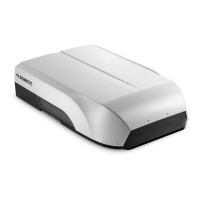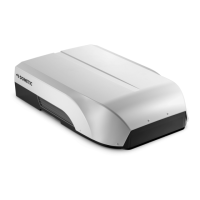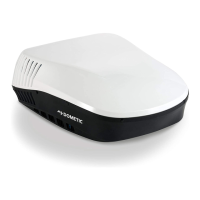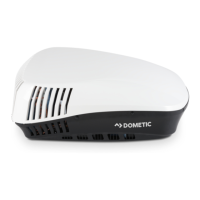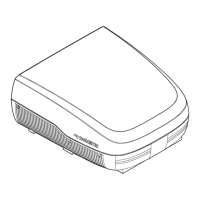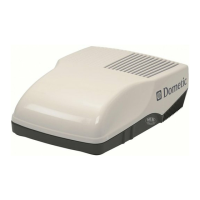Do you have a question about the Dometic Harrier Plus HP36H401RI and is the answer not in the manual?
Explains symbols used in the manual for safety and information.
Covers essential safety rules for device usage, child safety, and proper handling.
Details safe practices during operation, including power disconnection and avoiding specific vehicle types.
Specifies the intended application and limitations of the roof air conditioner.
Describes the function of each button and display element on the control panel.
Details the operation and features of the remote control for the air conditioner.
Explains the different operating modes like Automatic, Cooling, Heating, Ventilation, and Dehumidification.
Covers extra features such as timer settings and sleep function for enhanced user experience.
Outlines essential checks to perform before first-time operation of the unit.
Introduces the three main operating modes (Off, Stand-by, On) and control methods.
Provides instructions on how to operate the air conditioner using the remote control.
Offers tips to optimize the performance and efficiency of the air conditioner.
Explains the procedure for turning the unit on and putting it into stand-by mode.
Guides users on how to choose the desired operating mode for the air conditioner.
Details how to manually adjust the fan speed for different comfort levels.
Instructs on how to set the desired temperature for cooling and heating modes.
Explains how to direct the airflow within the vehicle by adjusting the air nozzles.
Describes how to program the timer for automatic switch-on and switch-off of the air conditioner.
Explains how to enable the sleep function to reduce noise and optimize comfort during sleep.
Details how to control the ambient lighting feature of the air conditioner.
Provides instructions on how to replace the batteries in the remote control.
Offers guidance on cleaning the unit, including specific warnings about water and cleaning agents.
Outlines routine checks for condensation drainage and general upkeep.
Details how to clean the air discharge unit filters and inspect profile seals for damage.
Covers professional servicing of the heat exchanger and checking bolt tightness.
Lists common issues and their remedies, covering various operational problems.
Addresses problems like low air output, water leaks, and power connection failures with solutions.
Explains the warranty period, required documents for claims, and consumer guarantees.
Provides guidelines for safe and environmentally sound disposal of the product and its components.
Details how to minimize environmental impact during use, maintenance, and proper battery disposal.
Lists detailed technical specifications, including cooling/heating capacity, voltage, refrigerant, and dimensions.
| Brand | Dometic |
|---|---|
| Model | Harrier Plus HP36H401RI |
| Category | Air Conditioner |
| Language | English |
